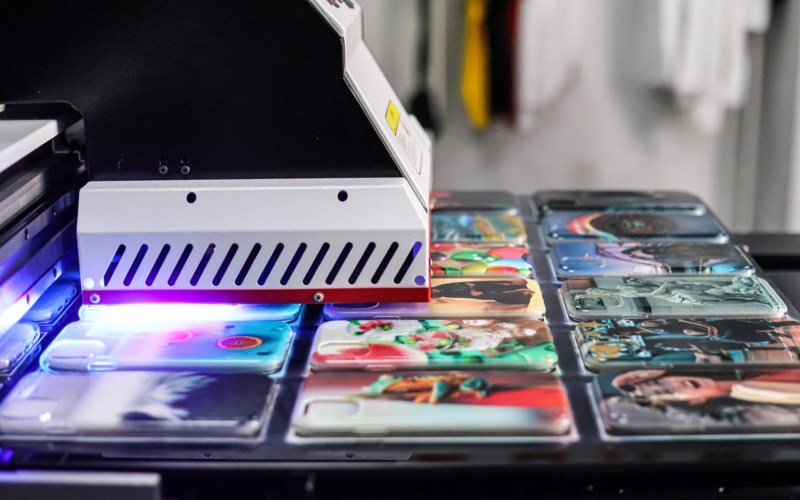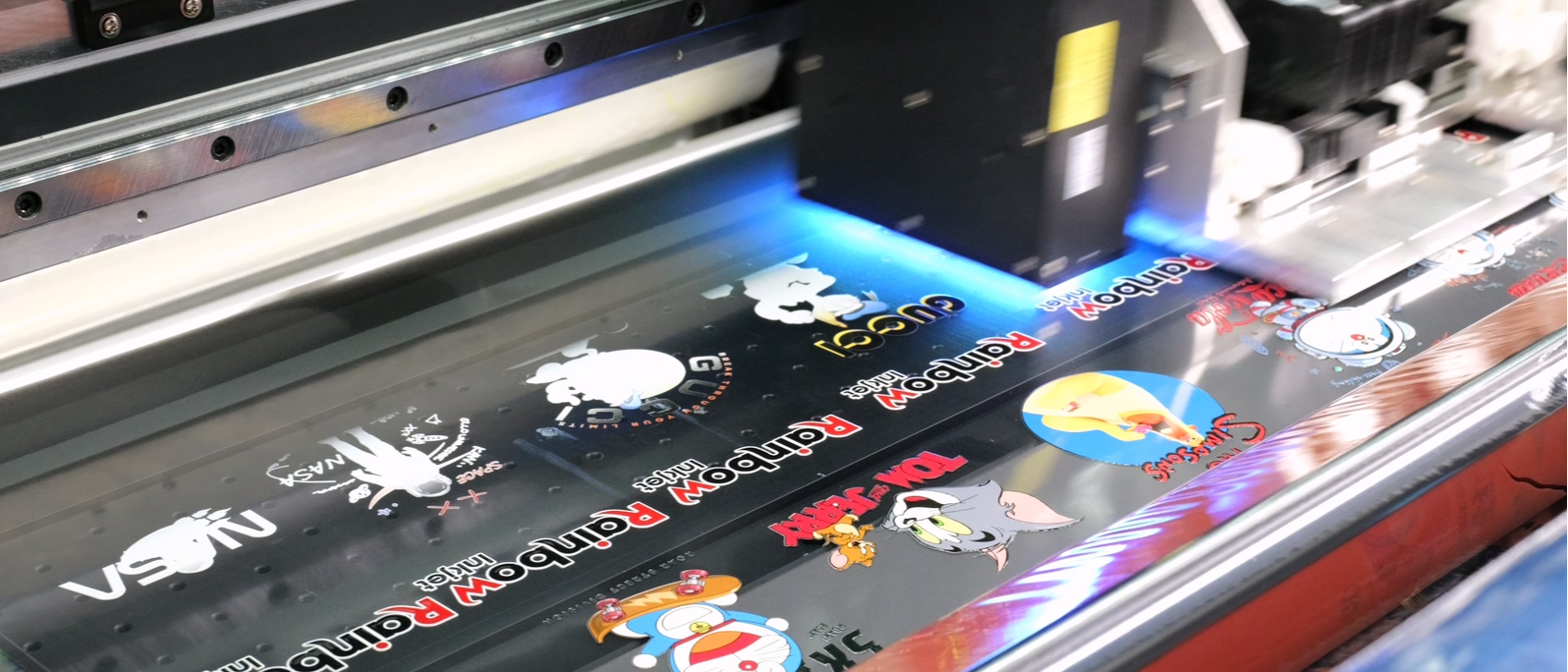What is UV Printing?
UV printing is a relatively new(compare to traditional printing tech) technology that uses ultraviolet (UV) light to cure and dry ink on a wide range of substrates, including paper, plastic, glass, and metal. Unlike traditional printing methods, UV printing dries the ink almost instantly, resulting in sharper, more vibrant images that are less likely to fade over time.
Advantages of UV Printing
UV printing offers numerous benefits over conventional printing methods. Some of these benefits include:
- Fast drying time, reducing the chances of ink smudging or offsetting.
- High-resolution prints with vibrant colors and sharp details.
- Eco-friendly, as UV inks emit low levels of VOCs (volatile organic compounds).
- Versatility, with the ability to print on a variety of materials.
- Increased durability, as the UV-cured ink is more resistant to scratches and fading.
Types of UV Printers
There are three main types of UV printers, each with its own set of advantages and limitations:
Flatbed UV Printers
Flatbed UV printers are designed to print directly onto rigid substrates such as glass, acrylic, and metal. These printers feature a flat printing surface that holds the material in place while the UV ink is applied. This type of printers have a good balance between capability and cost and are used more often by gift shop owners, promotional products printers, as well as business owners in advertisement/customization industry.
Benefits of Flatbed UV Printers:
- Ability to print on a wide range of rigid materials, both flat and rotary products.
- Excellent print quality and color accuracy, thanks to Epson and Ricoh newest print heads.
- High level of precision, enabling detailed designs and text.
Limitations of Flatbed UV Printers:
- Limited to printing on flat surfaces.(with Ricoh high-drop print heads, Rainbow Inkjet UV flatbed printers are able to print on curved surfaces and products. )
- Larger and heavier than other types of UV printers, requiring more space.
- Higher upfront cost compared to roll-to-roll or hybrid printers.
Roll-to-Roll UV Printers
Roll-to-roll UV printers, also known as roll-fed printers, are designed to print on flexible materials such as vinyl, fabric, and paper. These printers utilize a roll-to-roll system that feeds the material through the printer, allowing for continuous printing without interruption. With the rise of UV DTF printers, roll-to-roll UV printers are now hot again on the UV printers market.
Benefits of Roll-to-Roll UV Printers:
- Ideal for printing on flexible materials like banners and signage.
- High-speed printing capabilities, making them suitable for large-scale production.
- Typically more affordable than flatbed printers.
- Able to print UV DTF stickers(crystal label).
Limitations of Roll-to-Roll UV Printers:
- Unable to print on rigid or curved substrates.(except for using UV DTF transfer)
- Lower print quality compared to flatbed printers due to material movement during printing.
Hybrid UV Printers
Hybrid UV printers combine the capabilities of both flatbed and roll-to-roll printers, offering the flexibility to print on both rigid and flexible substrates. These printers typically have a modular design that allows for easy switching between the two printing modes.
Benefits of Hybrid UV Printers:
- Versatility to print on a wide range of materials, both rigid and flexible.
- High print quality and color accuracy.
- Space-saving design, as one printer can handle multiple types of substrates.
Limitations of Hybrid UV Printers:
- Generally much more expensive than standalone flatbed or roll-to-roll printers.
- May have slower print speeds compared to dedicated roll-to-roll printers.
How to Choose the Right UV Printer
When selecting a UV printer, consider the following factors:
- Substrate type: Determine the types of materials you plan to print on. If you need to print on both rigid and flexible substrates, a hybrid UV printer might be the best choice.
- Print volume: Consider the amount of printing you will be doing. For high-volume printing, a roll-to-roll printer may offer better efficiency, while flatbed printers might be more suitable for smaller-scale, high-precision projects.
- Budget: Keep in mind the initial investment and ongoing costs, such as ink and maintenance. Hybrid printers are often more expensive upfront but can offer long-term savings by replacing two separate printers.
- Space constraints: Evaluate the available workspace to ensure the printer will fit comfortably. Different sizes UV printers have different footprints.
FAQs
Q1: Can UV printers print on dark-colored substrates?
A1: Yes, UV printers can print on dark-colored substrates. Most UV printers are equipped with white ink, which can be used as a base layer to ensure that colors appear vibrant and opaque on darker surfaces.
Q2: How long do UV-printed materials last?
A2: The durability of UV-printed materials varies depending on the substrate and environmental conditions. However, UV-printed materials are generally more resistant to fading and scratching than those printed using traditional methods, with some prints lasting up to several years.
Q3: Are UV printers safe for the environment?
A3: UV printers are considered more environmentally friendly than traditional printers because they use inks with low VOC emissions. Additionally, the UV curing process consumes less energy and produces less waste compared to conventional printing methods.
Q4: Can I use a UV printer for printing on textiles?
A4: UV printers can print on textiles, but the results may not be as vibrant or long-lasting as those achieved with dedicated textile printers, such as dye-sublimation or direct-to-garment printers.
Q5: How much do UV printers cost?
A5: The cost of UV printers varies depending on the type, print size and features. Flatbed printers tend to be more expensive than roll-to-roll printers, while hybrid printers can be even more costly. Prices can range from a few thousand dollars for entry-level models to hundreds of thousands for industrial-grade machines. If you want to find out the prices for the UV printers you are interested in, welcome to reach us by phone/WhatsApp, email, or Skype, and chat with our professionals.
Post time: May-04-2023


